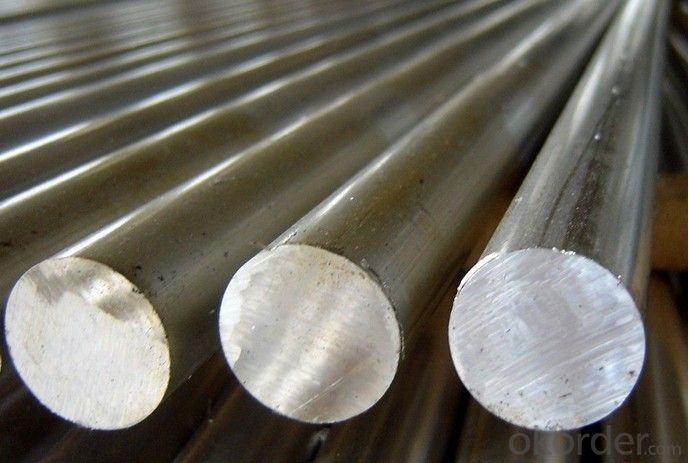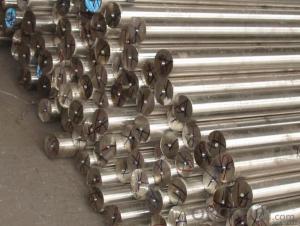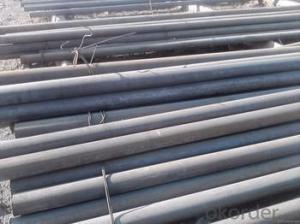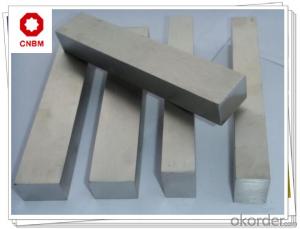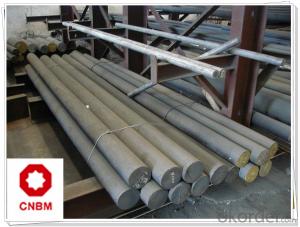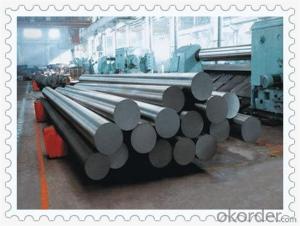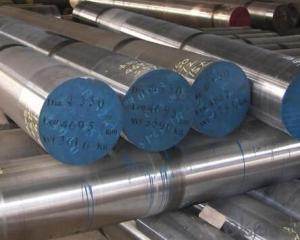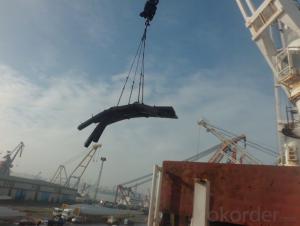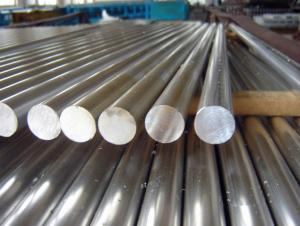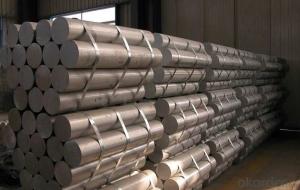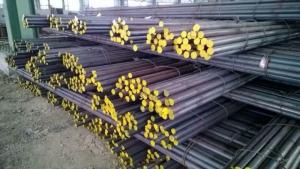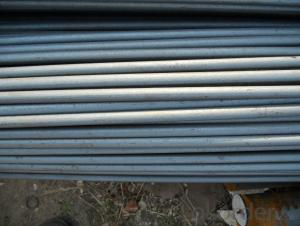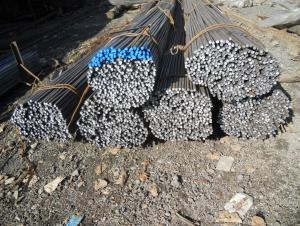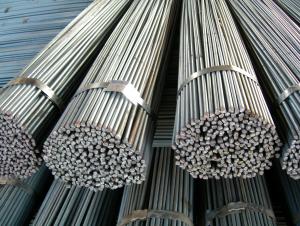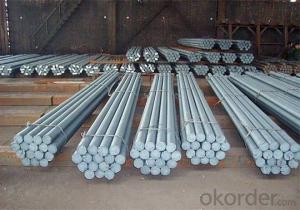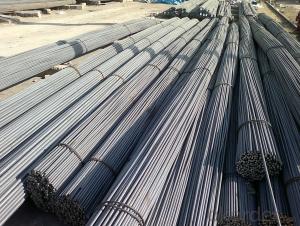Stainless Steel Round Bar for Machine-made Industry,Chemical Industry, Shipping Industry
- Loading Port:
- Qingdao
- Payment Terms:
- TT or LC
- Min Order Qty:
- 10 m.t.
- Supply Capability:
- 10000 m.t./month
OKorder Service Pledge
OKorder Financial Service
You Might Also Like
Stainless Steel Round Bar for Machine-made Industry,Chemical Industry, Shipping Industry
Products Information
1)Dia:2mm-500mm
2)Length:1m,2m,3m,5m,5.8m etc
3)Surface:Bright,Pickling,Black,Polishin
1) Product name: |
duplex stainless steel round bar 2205
|
2) Stardard: | AISI,SUS,GB,JIS,ASTM,DIN etc. |
3) Grade: | 200,300,400series, 201,202,301,304,309S,310S,316,316L,410,430,etc. |
4) Diameter: | 1/4'-4' Length:According to client's requirement |
5) Technology: | Bright, Polished, Turn smooth(Peeled),Brush, Mill, Pickled etc. |
6) Packing: | Export standard package, bundled or be required. The inner size of
container is below: 20ft GP: 5.9m(length) x 2.13m(width) x 2.18m(high) abou
t 24-26CBM 40ft GP: 11.8m(length) x 2.13m(width) x 2.18m(high) about 54C
BM 40ft HG: 11.8m(length) x 2.13m(width) x 2.72m(high) about 68CBM |
7) Payment term: | L/C, T/T, D/P |
8) Quality: | we can offer the certifications of chemical compostion and mechanical property |
9) Application | Machine-made industry, chemical industry, shipping industry architecture,
food industry,household products,and so on.
|
Picture
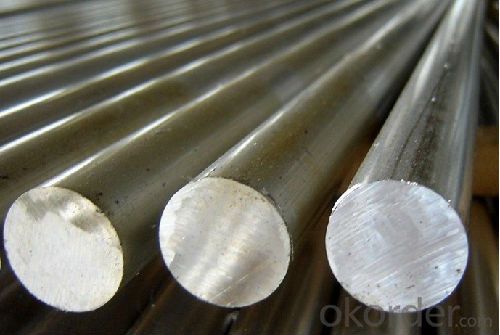
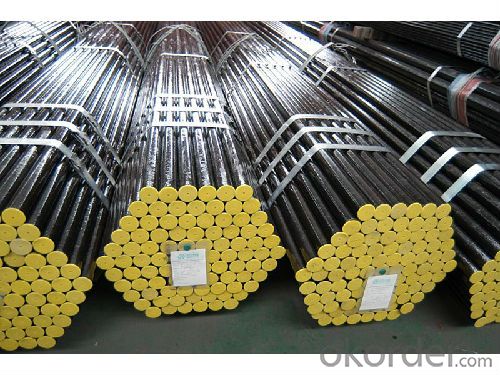
- Q: What is the difference between hot working and cold working of steel round bars?
- Hot working and cold working are two different methods used to shape and manipulate steel round bars. Hot working refers to the process of shaping steel at elevated temperatures, typically above the recrystallization temperature of the steel. This allows for the material to be more malleable and easier to shape. Hot working processes include forging, rolling, and extrusion. One of the main advantages of hot working is that it allows for the material to be formed into complex shapes and sizes with minimal force or energy. It also helps to refine the grain structure of the steel, improving its mechanical properties such as strength and toughness. However, hot working can cause oxidation and scale formation on the surface of the steel, which may require additional surface treatments or cleaning. Cold working, on the other hand, involves shaping steel at room temperature or below its recrystallization temperature. Cold working processes include bending, drawing, and cold rolling. Unlike hot working, cold working does not require heating the steel, which can save energy and reduce production costs. It also produces a smoother surface finish and tighter tolerances compared to hot working. Cold working can increase the hardness and strength of the steel, making it suitable for applications that require higher mechanical properties. However, cold working can also make the steel more brittle and prone to cracking. In summary, the main difference between hot working and cold working of steel round bars is the temperature at which the shaping process takes place. Hot working is done at elevated temperatures, allowing for easier shaping and improved mechanical properties, while cold working is done at room temperature or below, resulting in tighter tolerances and increased hardness. The choice between hot working and cold working depends on the desired properties and characteristics of the final product.
- Q: What are the advantages of using tool steel round bars?
- Tool steel round bars offer numerous benefits. Firstly, they boast outstanding hardness and wear resistance, making them perfect for high-stress applications like manufacturing cutting tools, dies, and molds. The hardness of tool steel also enables precise machining, resulting in accurate and intricate shapes. Secondly, tool steel round bars possess exceptional toughness and impact resistance, enabling them to withstand heavy-duty applications without breaking or cracking. This makes them suitable for demanding industries such as aerospace, automotive, and construction. Moreover, tool steel round bars are renowned for their high temperature resistance, maintaining their hardness and strength even in extreme heat. This is particularly advantageous in applications exposed to high temperatures, like forging or heat treating operations. Another advantage is the dimensional stability of tool steel round bars. They have a low coefficient of thermal expansion, meaning they undergo minimal dimensional changes when subjected to temperature variations. This ensures reliability and predictability in various operating conditions. Furthermore, tool steel round bars can be easily machined and heat treated to achieve specific properties. This versatility allows manufacturers to tailor the material to their specific needs, enhancing the overall performance of the end product. Additionally, tool steel round bars are readily available and cost-effective. They are widely produced and stocked by suppliers, ensuring easy accessibility for various applications. Furthermore, their longevity and resistance to wear and tear contribute to their cost-effectiveness. In conclusion, the advantages of using tool steel round bars include exceptional hardness, toughness, high temperature resistance, dimensional stability, versatility, availability, and cost-effectiveness. These properties make them the preferred choice in industries where durability, precision, and reliability are paramount.
- Q: What are the advantages of using high-temperature steel round bars?
- Using high-temperature steel round bars in various applications has several advantages. Firstly, these bars possess excellent heat resistance properties, enabling them to withstand elevated temperatures without compromising their structural integrity. This makes them ideal for industries like aerospace, automotive, and power generation, where components are exposed to extreme heat conditions. Another advantage of high-temperature steel round bars is their superior strength and durability. They are designed to withstand high mechanical stresses, making them suitable for applications requiring heavy loads or intense pressure. Additionally, their high strength-to-weight ratio allows for lighter and more efficient designs, reducing overall material and production costs. Furthermore, high-temperature steel round bars exhibit excellent corrosion resistance properties. They can withstand exposure to harsh environments, including chemicals, moisture, and saltwater, without significant degradation. This makes them suitable for industries like marine, chemical, and oil and gas where corrosion resistance is crucial. Moreover, high-temperature steel round bars offer excellent dimensional stability, maintaining their shape and size even under extreme temperature fluctuations. This property is highly advantageous in applications where precision and accuracy are essential, such as machining and tooling. Lastly, high-temperature steel round bars are readily available in various sizes, grades, and finishes, allowing for flexibility and customization to meet specific project requirements. This versatility makes them suitable for a wide range of applications, ensuring that there is a suitable option for every project, regardless of complexity or industry. In conclusion, high-temperature steel round bars provide superior heat resistance, strength, durability, corrosion resistance, dimensional stability, and versatility. These properties make them an excellent choice for various industries and applications, guaranteeing reliable and long-lasting performance in demanding environments.
- Q: What is the difference between a rough turned and a polished steel round bar?
- A rough turned steel round bar has undergone a preliminary machining process that removes surface imperfections and excess material, providing a slightly smoother finish. On the other hand, a polished steel round bar has undergone further polishing or grinding processes to achieve a much smoother and aesthetically appealing surface finish.
- Q: What are the different types of steel round bar surface treatments used in the aerospace industry?
- In the aerospace industry, there are several types of steel round bar surface treatments that are commonly used to enhance the performance and durability of the materials. These treatments are specifically designed to meet the stringent requirements and standards set by the industry. Some of the different types of steel round bar surface treatments used in the aerospace industry include: 1. Passivation: This treatment involves the removal of iron particles and other contaminants from the surface of the steel round bar. It helps to prevent corrosion and improves the overall corrosion resistance properties of the material. 2. Shot Peening: Shot peening is a process that involves bombarding the surface of the steel round bar with small metallic shots. This treatment induces compressive stress on the surface, which enhances the material's fatigue strength and resistance to stress corrosion cracking. 3. Electroplating: Electroplating is a common surface treatment used in the aerospace industry. It involves the deposition of a layer of metallic coating onto the steel round bar through an electrochemical process. This treatment enhances the material's corrosion resistance, wear resistance, and aesthetic appearance. 4. Anodizing: Anodizing is an electrolytic passivation process that is commonly used on aluminum alloys. However, it can also be used on steel round bars. This treatment forms a thick, durable, and corrosion-resistant layer of oxide on the surface, which improves the material's resistance to wear, corrosion, and scratching. 5. Nitriding: Nitriding is a surface hardening treatment that involves the diffusion of nitrogen into the surface of the steel round bar. This treatment improves the material's surface hardness, wear resistance, and fatigue strength. 6. Chemical Conversion Coating: Chemical conversion coating is a treatment that involves the formation of a thin, protective layer on the surface of the steel round bar. This coating enhances the material's corrosion resistance and provides a good base for subsequent paint or coating applications. These are just a few examples of the different types of steel round bar surface treatments used in the aerospace industry. Each treatment offers unique benefits and is selected based on the specific requirements of the application, such as corrosion resistance, wear resistance, fatigue strength, and aesthetic appearance.
- Q: Are steel and round steel the same thing?
- Round steel is a solid strip of steel whose cross section is round. Its specifications are expressed in diameter, in units of millimeters (mm), such as "50mm", which means a diameter of 50 millimeters of round steel.
- Q: How are steel round bars used in the manufacturing of valves and fittings?
- Valve and fitting manufacturing commonly utilizes steel round bars for their strength, durability, and versatility. These bars serve as the primary raw material for various valve and fitting components. A significant application of steel round bars in valve manufacturing involves producing valve stems. Valve stems control fluid or gas flow through the valve. The round bars are machined and threaded to create the stem, which connects to the valve disc or plug. Steel round bars are chosen for this purpose due to their high tensile strength, ensuring the stem can withstand the required pressure and torque to operate the valve. In fittings manufacturing, steel round bars are frequently used to produce threaded connectors, nipples, and couplings. These components are integral for joining pipes or tubes, enabling fluid or gas transfer in different systems. Steel round bars are easily machinable, allowing manufacturers to create precise threads and shapes necessary for these fittings. Additionally, steel round bars are also employed in fabricating the body or housing of valves and fittings. The bars can be cut, forged, or machined into the desired shape, providing a robust and dependable structure for the valve or fitting. The use of steel in the body guarantees the component's ability to endure high pressures, temperature fluctuations, and corrosive environments. In conclusion, steel round bars have a crucial role in valve and fitting manufacturing. Their strength, durability, and machinability make them an exceptional choice for creating vital components like valve stems, threaded connectors, and the bodies of valves and fittings.
- Q: What are the advantages of using case-hardening steel round bars?
- Case-hardening steel round bars offer several benefits for various applications. To begin with, these round bars possess a toughened outer layer, known as the "case," while maintaining a softer and more malleable core. This unique combination allows for exceptional surface wear resistance, making them highly suitable for situations where the material encounters abrasive or erosive forces. Furthermore, the hardened outer layer enhances the overall strength and durability of the round bars, thereby extending their lifespan. Another advantage of case-hardening steel round bars lies in their remarkable ability to withstand heavy impact loads. The hardened outer layer acts as a protective barrier, effectively absorbing and dispersing the energy from impacts, thus preventing any deformation or breakage. This makes them particularly well-suited for applications involving substantial loads or impacts, such as in the fields of machinery or construction equipment. Moreover, case-hardening steel round bars provide enhanced resistance against fatigue. The hardened surface layer aids in distributing stresses evenly, reducing the likelihood of cracks or fractures developing during cyclic loading conditions. Consequently, they prove to be an excellent choice for applications that demand long-term durability and the ability to withstand repeated stress, such as in automotive components or gears. Additionally, these round bars demonstrate excellent machinability. The soft and malleable core allows for easy cutting, drilling, and shaping, while the hardened surface ensures the necessary wear resistance. This aspect makes them both cost-effective and efficient to work with, enabling them to be effortlessly molded into various shapes and sizes to meet specific design requirements. In conclusion, the utilization of case-hardening steel round bars offers a plethora of advantages, including outstanding wear resistance, high impact load resistance, improved fatigue resistance, and excellent machinability. These characteristics render them a versatile and dependable choice for a wide array of applications across industries such as automotive, construction, and manufacturing.
- Q: How do steel round bars compare to carbon fiber round bars?
- Steel round bars and carbon fiber round bars are materials commonly used in various industries, but they differ in several aspects. Strength and Durability: Steel round bars are renowned for their exceptional strength and durability, enabling them to withstand heavy loads, high temperatures, and harsh environments. On the other hand, carbon fiber round bars are also strong but generally not as strong as steel bars. However, they have a remarkable strength-to-weight ratio, making them a popular choice when weight reduction is crucial. Weight: One noticeable difference is the weight. Steel round bars are significantly heavier compared to carbon fiber round bars. This weight disparity often makes carbon fiber bars more preferable in industries where reducing weight is important, like aerospace and automotive sectors. The use of lighter bars can contribute to improved fuel efficiency, increased speed, and enhanced maneuverability. Corrosion Resistance: Steel round bars are susceptible to corrosion, especially when exposed to moisture and specific chemicals. Regular maintenance and protective coatings are often necessary to prevent rusting. Conversely, carbon fiber round bars possess inherent corrosion resistance. This property makes them valuable in environments where corrosion is a concern, such as marine applications. Flexibility and Stiffness: Steel round bars are generally stiffer and less flexible compared to carbon fiber round bars. This characteristic is advantageous in applications where rigidity and structural integrity are crucial, like construction and heavy machinery. In contrast, carbon fiber round bars offer higher flexibility and can be engineered to have varying levels of stiffness, making them suitable for applications requiring vibration damping or enhanced shock absorption. Cost: In terms of cost-effectiveness, steel round bars usually have the upper hand. Steel is widely available, and its production costs are relatively low. Carbon fiber, however, is more expensive to produce due to the complex manufacturing process and the cost of raw materials. Consequently, carbon fiber round bars tend to be pricier and are limited to industries where their unique properties justify the increased costs. In conclusion, steel round bars and carbon fiber round bars have their own advantages and disadvantages. Steel bars offer exceptional strength, durability, and cost-effectiveness, while carbon fiber bars excel in weight reduction, corrosion resistance, flexibility, and stiffness. The choice between the two depends on the specific requirements of the application, including factors such as load-bearing capacity, weight reduction, corrosion resistance, and cost considerations.
- Q: What are the factors to consider when selecting a steel round bar for a specific application?
- When choosing a steel round bar for a particular application, there are several key factors that need to be taken into account. Firstly, the material grade of the steel round bar is of utmost importance. Different grades of steel have different properties, such as strength, hardness, and resistance to corrosion. It is crucial to select a material grade that is suitable for the specific requirements of the application. Secondly, the mechanical properties of the steel round bar, such as tensile strength, yield strength, and elongation, need to be carefully evaluated. These properties determine how well the bar can withstand forces and deformations under load. It is important to choose a steel round bar with mechanical properties that are compatible with the demands of the application. The size and dimensions of the steel round bar also play a critical role. This includes considering the diameter, length, and tolerance requirements. The dimensions should be chosen based on the structural needs of the application and the desired load-bearing capacity of the bar. The surface finish of the steel round bar is significant, particularly in applications where aesthetics or contact with other components are important. Factors such as smoothness, roughness, and the presence of coatings or treatments should be taken into account. Depending on the environment in which the application will be used, it is crucial to select a steel round bar with adequate corrosion resistance. Factors such as exposure to moisture, chemicals, or extreme temperatures can impact the bar's performance and longevity. Options like stainless steel or corrosion-resistant coatings can be considered to enhance the bar's resistance to corrosion. If the steel round bar needs to be machined or fabricated into a specific shape, its machinability must be considered. Some steel grades are easier to machine than others and may require different tools or techniques. It is important to choose a bar with a machinability that aligns with the desired manufacturing processes. Lastly, the cost of the steel round bar should not be overlooked. Different material grades and specifications come with varying price points. It is important to strike a balance between the required properties and performance of the bar and the budget constraints of the project. In conclusion, selecting a steel round bar for a specific application necessitates careful consideration of the material grade, mechanical properties, size, surface finish, corrosion resistance, machinability, and cost. By taking these factors into account, one can ensure that the chosen steel round bar will meet the requirements of the application and deliver optimal performance.
Send your message to us
Stainless Steel Round Bar for Machine-made Industry,Chemical Industry, Shipping Industry
- Loading Port:
- Qingdao
- Payment Terms:
- TT or LC
- Min Order Qty:
- 10 m.t.
- Supply Capability:
- 10000 m.t./month
OKorder Service Pledge
OKorder Financial Service
Similar products
Hot products
Hot Searches
Related keywords


